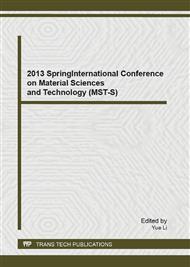p.301
p.307
p.313
p.321
p.326
p.332
p.338
p.343
p.349
A Closed-Form Solution of Effective Young's Modulus for Composites Including Multi-Shape Inclusions Using Improved Mori-Tanaka Model
Abstract:
In this paper, an improved model is proposed by combining Mori-Tanaka method with Eshelbys equivalent inclusion concept to derive a closed-form solution of the effective Young's modulus E11 for hybrid composites reinforced with multi-shapes inclusions. When only the fiber-like inclusions are considered in the model, the results are consistent with those from Tandons unidirectional aligned composites based on Mori-Tanaka theory. For composites reinforced with fiber-like and spherical inclusions, the homogenization theory is employed to verify the effects of the proposed model. The influence of volume fraction and Youngs modulus of each phase on effective Youngs modulus E11 is investigated, and the results show that E11 is sensitive to the inclusion shapes, and the model is practicable to predict the effective mechanical properties of composites reinforced by several inclusions with different shapes.
Info:
Periodical:
Pages:
343-348
Citation:
Online since:
June 2013
Authors:
Price:
Сopyright:
© 2013 Trans Tech Publications Ltd. All Rights Reserved
Share:
Citation:


